Well this has been a long time coming and let me say right up front it was worth the wait. Rio de Janeiro couldn’t have been settled in a more beautiful landscape, nestled between the hills and the ocean. They made a definite point of saying that they were hills as they were not tall enough to classify as mountains.
The skyline is dominated by two main peaks that rise from Guanabara Bay. The first is sugarloaf mountain (not a mountain at 396 meters but hey) and the other is Corcovado (still not a mountain at 710 meters) which is the site of Christ the Redeemer.
Our day was mostly grey and overcast, but on occasion the sun peaked out from behind the clouds but then quickly disappeared again.
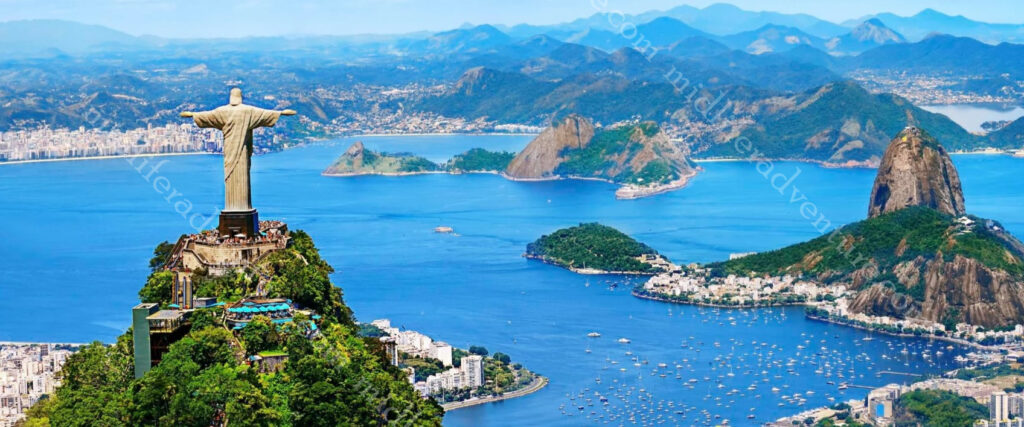
Getting around in Rio de Janeiro proved to be really simple. Our movement was dominated by our tour bus, but a clean and efficient metro system, cheap Ubers and yellow taxis make Rio pretty straightforward to navigate. During daylight hours the streets are safe to walk around on and the beaches have hire bikes that link in with a local mobile app (about $7 for 2 days).
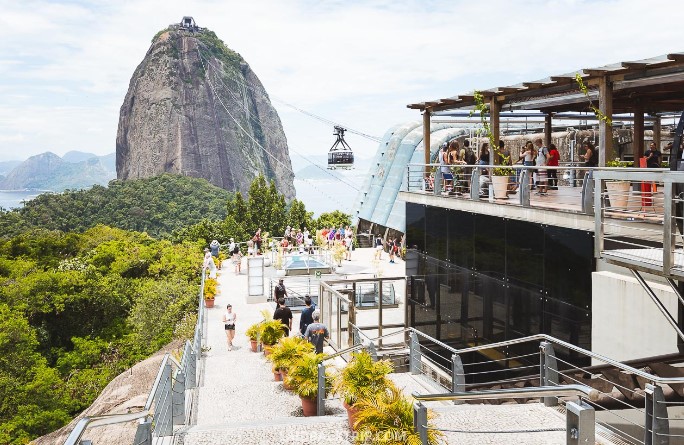
Sugarloaf Mountain (known as Pao de Acucar) is one of the most iconic and sought-after landmarks and top attractions of Rio de Janeiro.
The peak is known worldwide for its cable car, the panoramic views of the city and the infamous Rio beaches (more about these later). It is a huge lump of granite and quartz rising straight out of the water and offers 360 degree views of Rio. It is also a UNESCO World Heritage site.






You have the option of hiking (yeah right) or taking the modern cable car all the way to the top. The hike takes you half way with another cable car taking you the rest of the way.

The obvious next place was to climb the Corcovado mountain to see the Christ the Redeemer statue.
This is possibly one of the most famous views on the planet. You’ve probably seen the picture million times – a giant white concrete statue of Christ the Redeemer overlooking the city of Rio de Janeiro.






The sight is impressive in photos, but the reality is even better. The statue was first conceived in 1920, after World War I, when representatives of the Brazilian republic felt that the country needed a symbol to strengthen their faith again.
To get here we got a bus to the foot of the hill, where you meet up with the funicular railway, which takes you by cog tram, through the forest to the foot of the statue. The tram/train leaves every 30 minutes, and the ride up takes 20 minutes.





The statue is 30 meters tall, standing on an 8 meter pedestal and weighs in at 635 tons and was finished in 1931. The arms of Christ the Redeemer stretch 28 meters wide and the surrounding area has been designated as the Tijuca Forest National Park.




Lets be serious here. You will be but one of thousands visiting here. At any time of day. The place is packed. If your photo editing skills are good or if your framing is perfect or you are super lucky, you may get a nice photo. Otherwise expect there to be a ton of other people. We gave up on the getting to the Sugarloaf lookout from the Corcovado as the number of people was just mind boggling.
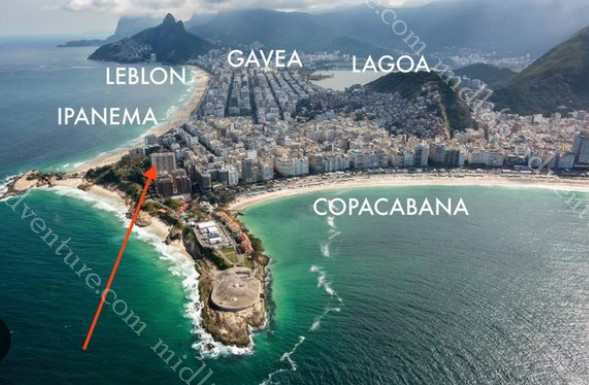
Coming down the mountain (hill) we did the beach loop. Rio de Janeiro is home to some of the most famous beaches on the planet. The main ones are Copacabana, Ipanema, and Leblon (broken up only by Arpoador rock..
Copacabana is one of the most famous beaches in the world. The boulevard was designed by Brazilian architect Roberto Burle Marx and is depicted in postcards – mainly due to the beautiful wide beach and striking patterned pavement. As we were in town on New Year’s Eve, the beaches were more packed than usual and the local authorities were setting up for the New Year’s Celebration. The sheer volume of portaloos being set up was a sight to behold.





Ipanema beach is the next most famous of the Rio beaches popularised by the famous 1960’s bossa nova song the ‘Girl from Ipanema’. If you think that you can visit this beach without hearing this song in either English or Portuguese then you are kidding yourself. The song was written about a real person (Helô Pinheiro) who at the age of 17 inspired the songwriters (Antônio Carlos Jobim and Vinicius de Moraes) by simply walking to the beach.



Leblon Beach flows directly on from Ipanema Beach separated only by a canal and park known as Jardim de Alá or thew garden of Allah. The Canal links the lagoon to the Atlantic Ocean.


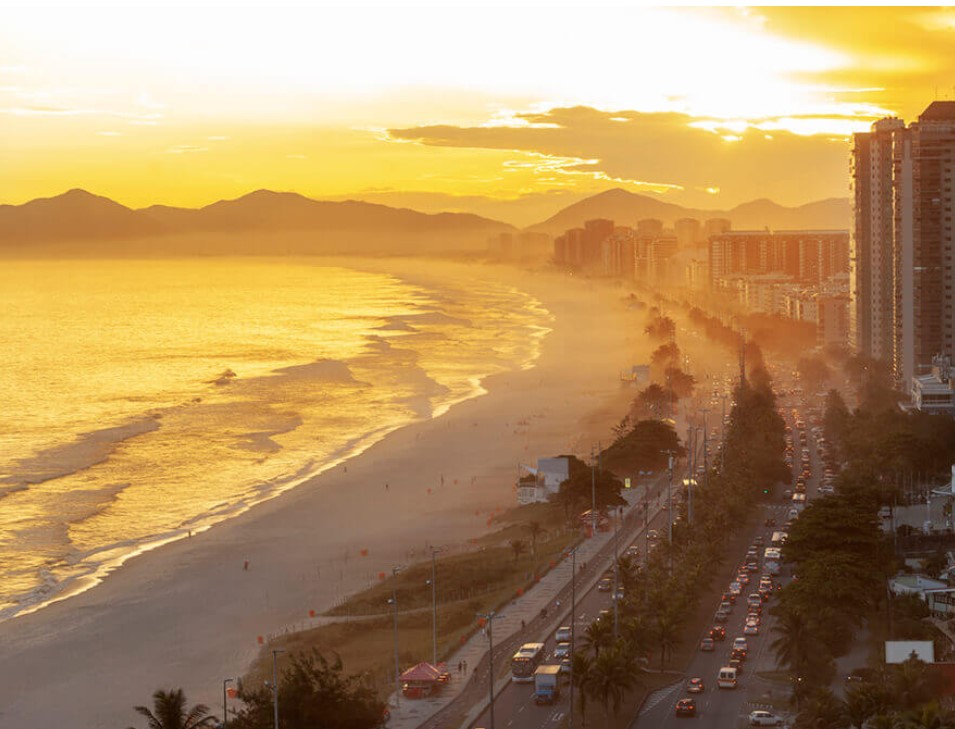
Barra da Tijuca is a bit more off the beaten path but is a suburban beach. It is more American in style with condo’s and shopping malls everywhere you look and was the site of many events during the 2016 Olympics.
Since the Portuguese colonised Brazil in the 16th century, it has been overwhelmingly Catholic. Today Brazil has more Roman Catholics than any other country in the world with an estimated 123 million of them. This translates to a ton of fairly impressive churches dotting the city.

The first and main one is the Metropolitan Cathedral of Saint Sebastian.
The church of São Francisco da Penitência was built in 1726 and is a Baroque colonial church in the center of the city.
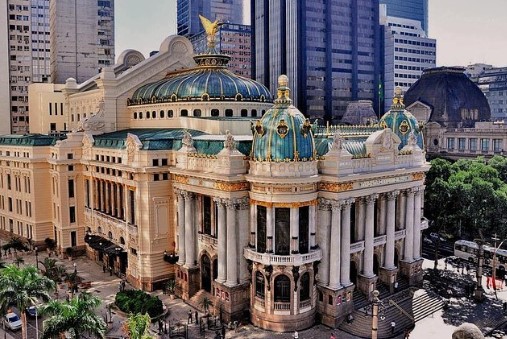
Rio also has four major football (soccer) teams and if you think you can go anywhere in town without somebody mentioning one or more of these then you are also kidding yourself. The teams are Flamengo, Fluminense, Botafogo and Vasco.




Rio is probably equally as famous for its Carnival. Usually in February, it begins on the Friday preceding lent and ends on Ash Wednesday, but the Winners’ Parade happens on the Saturday after carnival ends. Up until the mid 1980s, the Samba Parades of Rio Carnival were held along the main street of Avenida Presidente Vargas.
But 1984 saw the building of the permanent structure and stands that have come to be known as the Sambadrome Marquês de Sapucaí. This is a purpose-built stadium, designed specifically to host the annual parade and able to accommodate about 75,000 people.




The focus of Carnival is for the local Samba Schools to compete. The blurb says that the parades are an amalgamation of dance, fashion, music, narrative, spectacle, and competition in which thousands of performers process in the early morning hours through the Sambadrome.





Coming through in December we got to see the Sambadrome but obviously missed out on the February celebrations. The other thing that has tended to become a thing of ours is the taking in of local street art.









Due to the fact that it was New Year’s Eve and it was a cruise ship full of older people, the decision was made that the night would be more safely spent on the ship, rather than on the beaches of Brazil. So we all got ourselves back to the ship before dark and moved around to park in front of Copacabana Beach where we waited for the midnight fireworks show.









Everywhere we went in Brazil we constantly read about the safety situation. Even the Australian smart traveller website suggests that you exercise a high degree of caution in Brazil due to the threat of violent crime. This has not been our experience, everywhere we have been has been friendly and welcoming and has felt safe (granted we were not out and about in the evenings).
Brazil has been fun, friendly, incredibly well priced and will absolutely be somewhere that we will return to.